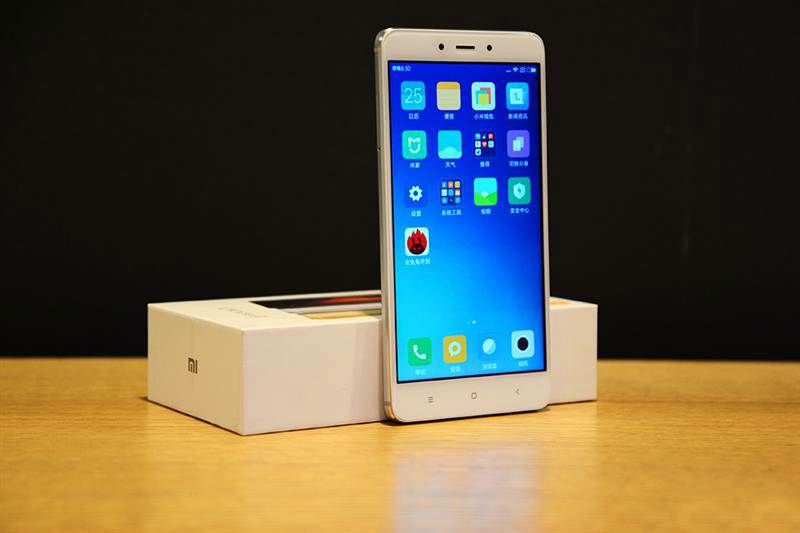Xiaomi is known as the Chinese Apple, which means we are dealing with a brand that should always come with top-notch devices at high price tag. But this manufacturer has focused on market, where incomes of people are low in comparison with the West. So it’s quite reasonable why some of Xiaomi products are affordable. This absolutely doesn’t mean they are packed with weaker features. Quite to the contrary, even launching budget devices Xiaomi tries to pack them with respectable features. The Xiaomi Redmi Note 4 is the latest budget high-end smartphone of the company, but it would be a delusion to think there are no other handset with identical features. So we have decided to put the Redmi Note 4 next to other smartphones available in October 2016 to find out whether they can compete with this awesome handset.
To understand what a device we are dealing with, let’s take a quick look at its key features. The Redmi Note 4 sports a 5.5-inch IPS LCD screen at resolution of 1080 x 1920 pixels and pixel density of 401 ppi, a Mediatek MT6797 Helio X20 deca-core processor clocked at 2.1GHz and paired with a 2GB RAM + 16GB ROM (Standard Edition) or 3GB RAM + 64GB ROM (High Edition) and a Mali-T880 MP4 GPU, a 13MP rear camera with dual-LED (dual-tone) flash and f/2.0 aperture, a 5MP front camera, a 4100mAh battery, USB OTG, a fingerprint scanner, Android 6.0 Marshmallow, and MIUI 8. As you see, this phone is ready to stand against any device. Moreover, when it comes to pricing, it seems the Redmi Note 4 has no rivals – it costs $205 (Standard Edition) and $220 (High Edition).
Xiaomi Redmi Note 4 vs. Xiaomi Redmi Pro
This phone was launched on October and though many can ask why the company has released two phones with identical features, we have to remember they are designed for different markets and focus on different category customers. We have already compared the Redmi Pro with the Redmi Note 4, and it’s very difficult to understand which one is better. So let’s take a look at its features and pricing to find out whether the Redmi Pro is the closest competitor to our hero.

The Redmi Pro sports a 5.5-inch LPTS-AMOLED screen at Full HD resolution and 401 ppi, a Mediatek MT6797T Helio X25 deca-core CPU clocked at 2.5GHz and 2.3GHz (for the Exclusive and High Editions, respectively) or Mediatek MT6797 Helio X20 deca-core CPU clocked at 2.1GHz (Standard Edition), a Mali-T880 MP4 GPU, 4GB RAM + 128GB ROM (Exclusive Edition) or 3GB RAM + 32/64GB ROM (other models), a dual 13MP+5MP camera with dual-LED (dual-tone) and f/2.0 aperture, 5MP front camera capable of recording 1080p videos, a 4050mAh battery, fingerprint scanner, USB Type-C, Android 6.0 and MIUI8. This phone is priced at around $260. So we have to say, though the Xiaomi Redmi Pro is the way more powerful, people will look at the pricing in most cases. I think we can put the ‘=’ symbol between these two handsets.
Xiaomi Redmi Note 4 vs. Lenovo Vibe P1 Turbo
This handset was released back in February of this year, but it doesn’t prevent it to compete with freshly launched handsets successfully. The Lenovo Vibe P1 Turbo is packed with a 5.5-inch IPS screen protected with Gorilla Glass 3 and providing Full HD resolution as well as 401 ppi pixel density, a Snapdragon 615 octa-core CPU, an Adreno 405 GPU, a 3GB of RAM, a 32GB of ROM, a 13MP rear camera with f/2.2 aperture and dual-LED (dual-tone), a 5MP front camera, a fingerprint scanner, USB OTG, a 5000mAh battery with Quick Charge 2.0, and Android 5.1 Lollipop. This device is available for $295.

I guess the only advantages of this phone in comparison to the Xiaomi Redmi Note 4 are the Snapdragon CPU (though it has only 8 cores) and an epic battery with 5000mAh battery. The pricing is the way higher, so we can say the Redmi Note 4 looks more attractive here.
Xiaomi Redmi Note 4 vs. Yu Yunicorn

This handset was announced a few months earlier than the Xiaomi Redmi Note 4. Like our hero it comes with a 5.5-inch IPS LCD screen with Full HD resolution and 401 ppi pixel density, a Mediatek MT6755 Helio P10 octa-core processor (4×1.8 GHz Cortex-A53 & 4×1.0 GHz Cortex-A53), a Mali-T860MP2 GPU, a 4GB of RAM, a 32GB of ROM, a 13MP camera with dual-LED (dual-tone), a 5MP front camera, a fingerprint scanner, a 4000mAh battery, Android 5.1.1, and Around YU 2.0. The Yu Yunicorn is available for $203. Thus this handset is more affordable than the Xiaomi Redmi Note 4 High Edition, but there is no difference between it and the Standard Edition. The ‘=’ can be put even here.
Xiaomi Redmi Note 4 vs. BLU Energy XL

Launched in July this phone met the Xiaomi Redmi Note 4 as a touch competitor lately. Moreover, the the BLU Energy XL is the first 6-inch phablet in this list. It also comes with a Full HD resolution, 367 ppi pixel density, and Corning Gorilla Glass 3 protection. The rest of features include a Mediatek MT6753 octa-core processor clocked at 1.3GHz, Mali-T720MP3 GPU, a 3GB of RAM, 64GB of RAM, a 13MP camera with single LED flash, a 5MP front camera, fingerprint scanner, a 5000mAh battery, and Android 5.1. As you see, the BLU Energy XL is more attractive in some cases and weaker in others. So let’s take a glance at the pricing – the phone is sold for $296. The Xiaomi Redmi Note 4 is an absolute winner here.
Xiaomi Redmi Note 4 vs. Vivo X7 Plus

The next rival with a larger screen. The Vivo X7 Plus sports a 5.7-inch Super AMOLED screen with Full HD resolution and 386ppi pixel density, a Qualcomm MSM8976 Snapdragon 652 octa-core CPU (4×1.8 GHz Cortex-A72 & 4×1.4 GHz Cortex-A53) paired with an Adreno 510 GPU, a 4GB of RAM, and a 64GB of ROM, a 16MP camera with a single LED flash, a 16MP camera on the front, a 4000mAh battery, Android 5.1 and Funtouch OS 2.5.1. I guess you are impressed by these features, but you will be more impressed by its pricing – $768. So though the Vivo X7 Plus looks very stylish and sports a number of amazing features, it can’t be compared to the Xiaomi Redmi Note 4.
Xiaomi Redmi Note 4 vs. Lenovo Zuk Z2

This is the only rival with smaller screen than expected. It is equipped with a 5-inch LTPS IPS LCD touchscreen at a resolution of 1080 x 1920 pixels and 441 ppi pixel density, a Qualcomm MSM8996 Snapdragon 820 quad-core CPU (2×2.15 GHz Kryo & 2×1.6 GHz Kryo) accompanied with an Adreno 530 GPU, a 4GB RAM, and a 64GB of ROM. there are also a 13MP camera with single LED, an 8MP camera on the front, a 3500mAh battery, a fingerprint scanner, Android 6.0.1, and ZUI 2.0. The Lenovo Zuk Z2 is priced at $283. Thus it is weaker and it costs more. No reasons to choose it instead of the Xiaomi Redmi Note 4.
Xiaomi Redmi Note 4 vs. Gionee M5 Marathon Plus

The last candidate is the Gionee M5 Marathon Plus. This is the second phone in this list with a 6-inch screen, but what’s more amazing it has been launched back in December 2015. However, its launch date doesn’t prevent the phone of being an actual competitor to the Xiaomi Redmi Note 4. Well, the Gionee M5 Marathon Plus is packed with a Full HD at 368ppi pixel density, a Mediatek MT6753 octa-core processor clocked at 1.3GHz, a 3GB of RAM, a 64GB of ROM, a 13MP rear camera with single LED, a 5MP front camera, a fingerprint scanner, a USB Type-C, a 5020 mAh battery (!), Android 5.1, and Amigo 3.1. So if we take out the battery from this specs list, the Gionee M5 Marathon Plus becomes uncompetitive. Moreover, I guess it’s overpriced – $474.
Conclusion
We have compared 7 great devices with identical features to the Xiaomi Redmi Note 4, which is known one if the most budget handsets in the high-end category. As a result, only two devices in face of the Xiaomi Redmi Pro and Yu Yunicorn were able to compete with it like equals. The rest of nominees yield our hero either in terms of features or in terms of price tags. So the title of the most affordable high-end smartphone stays at the Xiaomi Redmi Note 4 for October as well.
Inspired by pricepony







